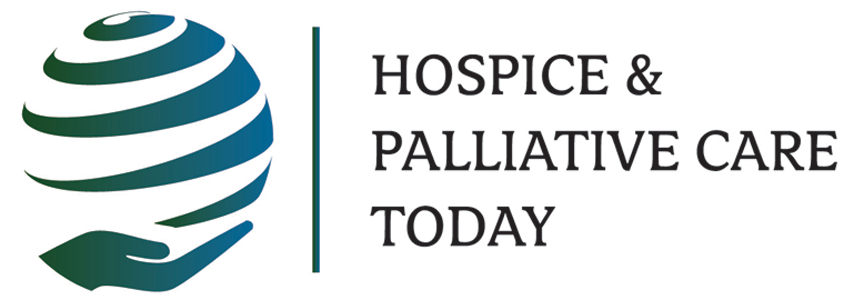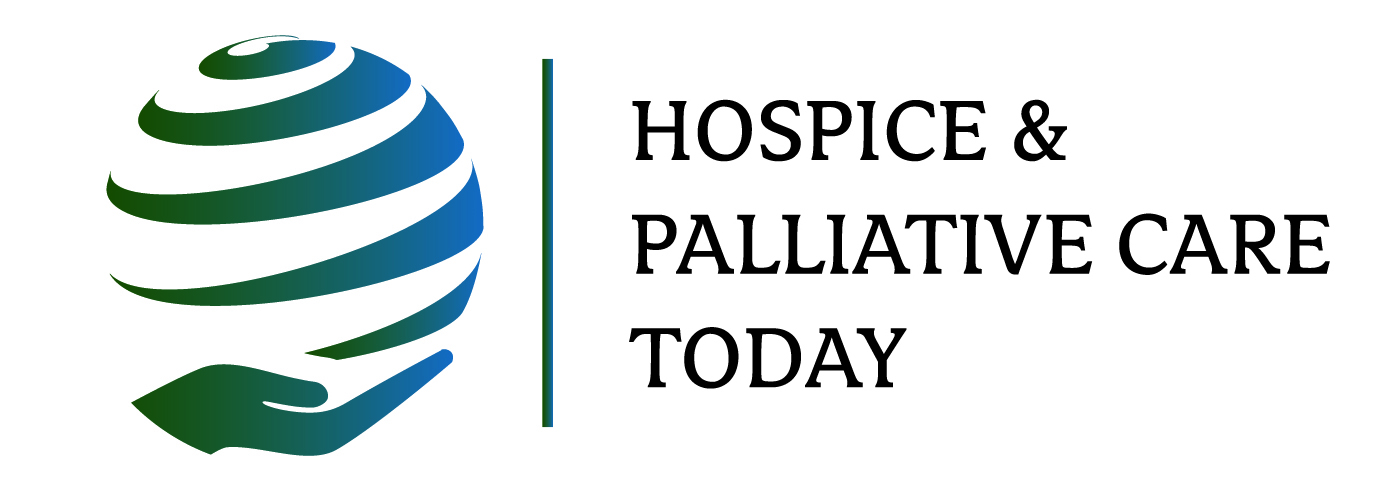Sign up for our free daily newsletters here! Note: subscribers can access our search feature!
Welcome to Hospice & Palliative Care Today, a daily email summarizing numerous topics essential for understanding the current landscape of serious illness and end-of-life care. Teleios Collaborative Network podcasts review Hospice & Palliative Care Today monthly content - click here for these and all TCN Talks podcasts.
2. New Salem-based hospice opens with focus on nursing staff wellness
3. St. Charles fifth graders make greeting cards for hospice patients
5. Heart disease tops US mortality in 2024, CDC reports
Fulfilling end-of-life dreams: A scoping review of bucket lists in palliative and hospice care
Palliative Supportive Care - Cambridge University Press; by Swasati Handique, Michael Bennett and Scott D Ryan; 9/12/25
Results: Four major themes were established using thematic content analysis: (1) impact on holistic well-being, (2) role of family in wish fulfillment, (3) cultivation of gratitude, and (4) collaborative leadership in wish fulfillment. In wish fulfillment, the results significantly pointed to the need for more intricate evaluation among patients and interventions that cover beyond the physical aspect.
Significance of results: Palliative and hospice care settings should work toward securing sustainable funding for structured wish-fulfillment programs to address existing accessibility gaps and further enhance the holistic nature of care in these settings.
Editor's Note: For hospice organizations that can receive donations, setting up a Wish/Bucket List Fund makes for a meaningful, easy-to-demonstrate ROI on donated gifts. With this, you need to have some type of discretionary review/approval process in place, with assurances of confidentiality when important to the person and/or family.
New Salem-based hospice opens with focus on nursing staff wellness
Salem Reporter, Salem, OR; by Hailey Cook; 9/11/25
After 12 years working as a hospice nurse, Christie Rivelli reached her breaking point. The pressure had built since the pandemic, when her workload went from 15 patients at a time to 28. ... By opening a new, locally-owned hospice company, they’re bucking a trend. ... Solterra currently has a staff of 19, with a range of one to three decades of experience in hospice care. As a nurse herself, Rivelli said she’s prioritized her staff’s workload and benefits. Everyone starts by getting training about post-traumatic stress disorder, and she said new hires have had trouble adjusting to a slower pace of work. ... Rivelli said. “Downtime in your workday should be built in … but boy, that’s not how it’s been in hospice.” She said some companies will assign 40 patients to one nurse, which forces the nurses to do pop-in check-ups rather than getting to know their patients. It can also mean the patient will see a rotation of unfamiliar faces rather than one nurse.
 |
St. Charles fifth graders make greeting cards for hospice patients
Hometown Stations - ABC, CBS, FOX, NBC, Lima, OH; by Pearl Lewandowski; 9/11/25
For the past 25 years, students have taken part in making greeting cards for local hospice patients. ... “Fifth graders are at an age where they may have already lost someone, or they may have someone who's sick, or they may have aging grandparents, so there's always concerns and questions,” said Dr. Amy Mestemaker, medical director of Mercy Health Hospice. “If we can help support them or help them better understand the process, we want to do that.”
‘A playbook for best practices’: ASCO and COA release updated Oncology Medical Home Standards
The ASCO Post; by ASCO (American Society of Clinical Oncology); 9/10/25
ASCO and the Community Oncology Alliance (COA) have released updated standards for its Oncology Medical Home (OMH) certification program, which were initially codified and published in 2021. The 2021 systematic literature review focused on the topics of OMH model of care, clinical pathways, and survivorship care plans. Among the 2025 updates are new standards that address “just culture” and safety in oncology, multidisciplinary team management, and geriatric assessment.
 |
Heart disease tops US mortality in 2024, CDC reports
McKnights Long-Term Care News; by Foster Stubbs; 9/12/25
The leading causes of death in the United States in 2024 were heart disease, cancer and unintentional injury, the Centers for Disease Control and Prevention said in a September report. ... In total, there were 3,072,039 total deaths that occurred in the US in 2024 with a death rate of 722.0 per 100,000 people. This was 3.8% lower than the totals in 2023. Death rates also decreased for all race and ethnicity groups but rates for Black people remain higher than those for all other groups. Overall, death rates were highest for males, older adults and Black people, demonstrating a need for further examination of the health of these demographic groups. Heart disease caused 683,037 deaths, cancer caused 619,812 deaths and unintentional injury resulted in 196,488 deaths. Mortality statistics were collected by The National Center for Health Statistics’ (NCHS) National Vital Statistics System (NVSS) using US death certificate data. [The CDC Report is at Vital Statistics Rapid Release, Number 039, September 2025.]
Federal long-term care advisory commission proposed
McKnights Long-Term Care News; by Kimberly Marselas; 9/14/25
A National Advisory Commission on long-term care would be created under a bill introduced Thursday [9/11] that is intended to provide recommendations to Congress over the next decade. US Sens. Jacky Rosen (D-NV) and John Boozman (R-AR) said the commission would address a growing number of issues for seniors and others in need of long-term help with activities of daily living. The bipartisan Supporting Our Seniors Act directs a 12-member commission to assess and provide recommendations to Congress on improving service delivery, financing, workforce adequacy, and other issues related to access and affordability.
 |
Holistic nursing in BSN programs: A patient-centered approach
Nevada State University; 9/9/25
... Holistic care in nursing reflects a broader vision, encouraging nurses to see patients as whole people rather than conditions to be managed. Bachelor of Science in Nursing (BSN) programs are responding by weaving holistic care into both coursework and clinical experiences. From teaching cultural sensitivity and ethics to encouraging self-care, these programs prepare nurses to build stronger relationships with patients while promoting healing on multiple levels. The result is a patient-centered approach that benefits individuals, families, and communities alike.
Has human life expectancy already peaked?
Vice; by Luis Prada; 9/10/25
For most of the 20th century, human life expectancy skyrocketed. Advancements in hygiene science, a wide variety of medical innovations and discoveries ... have all helped our collective life expectancies tremendously. According to a new study, however, we may have topped out. In the study, published in PNAS and spotted by Science Alert, an international team of researchers crunched the numbers on people born between 1939 and 2000 in 23 high-income countries, using six different forecasting models.
Editor's Note: I recall a hospice CE conference around 2005, where a healthcare data statistician presented projections on mortality trends. Based on the previous century’s gains, the data suggested that babies born then could live well past 100—with 120 years as a realistic possibility. This new study raises the provocative question of whether those optimistic forecasts may already have reached their limits.
 |
Evaluating the clinical reasoning of generative AI in palliative care: A comparison with five years of pharmacy learners
Journal of Palliative Medicine; by Mikaila T Lane, Toluwalase A Ajayi, Kyle P Edmonds, Rabia S Atayee; 9/9/25
Context: Artificial intelligence (AI), particularly large language models (LLMs), offers the potential to augment clinical decision-making, including in palliative care pharmacy, where personalized treatment and assessments are important.
Conclusions: While LLMs [large language models] show potential for augmenting clinical decision-making, their limitations in patient-centered care highlight the necessity of human oversight and reinforce that they cannot replace human expertise in palliative care.
Guest Editor's Note, Drew Mihalyo, PharmD:
Takeaway: LLMs can mimic expert-style reasoning under uncertainty, but that’s not the same as safe, compassionate bedside decisions by clinicians.
Caveat: The study bypassed some default safety guardrails; real-world use must keep protections on.
Next steps: Pilot pharmacist-in-the-loop workflows with guardrails intact; track concrete outcomes (time-to-analgesia, deprescribing quality, error interception) and require audit logs, source traceability, and bias/shift monitoring.
Bottom line: Promising adjunct, not a replacement and human oversight remains essential. Adoption at the bedside may come sooner than many expect.
I invite conversation with anyone that wants to learn more about this topic. My LinkedIn information is www.linkedin.com/in/drewmihalyo.
Photos show Ghana’s fantasy coffins as a stylish final rest
AP News; by Misper Apawu; 9/12/25
ACCRA, Ghana (AP) — While fantasy coffins have been common among the Ga people of Accra, Ghana, they are becoming a widespread practice offering a colorful alternative to simple wooden boxes. Each piece is crafted not just to bury the deceased, but to embody the essence of their life. They can be so colorful that they can make dying seem attractive.
 |
Hospice AI - Summarize national and state hospice utilization trends over the past 10 years
Hospice & Palliative Care Today staff; 9/15/25
Today we asked ChatGPT to summarize hospice utilization trends over the past decade using a spreadsheet uploaded from Hospice Analytics. One "key takeaway" was that growth is slowing nationally, suggesting hospice has matured in penetration, though opportunities remain in underutilizing states. Click here for the 4-page detailed summary, including AI-generated charts. Of note, while the AI-generated charts were correct, the accompanying text was incorrect - reinforcing the need for humans to double-check output!
The Fine Print:
Paywalls: Some links may take readers to articles that either require registration or are behind a paywall. Disclaimer: Hospice & Palliative Care Today provides brief summaries of news stories of interest to hospice, palliative, and end-of-life care professionals (typically taken directly from the source article). Hospice & Palliative Care Today is not responsible or liable for the validity or reliability of information in these articles and directs the reader to authors of the source articles for questions or comments. Additionally, Dr. Cordt Kassner, Publisher, and Dr. Joy Berger, Editor in Chief, welcome your feedback regarding content of Hospice & Palliative Care Today. Unsubscribe: Hospice & Palliative Care Today is a free subscription email. If you believe you have received this email in error, or if you no longer wish to receive Hospice & Palliative Care Today, please unsubscribe here or reply to this email with the message “Unsubscribe”. Thank you.



